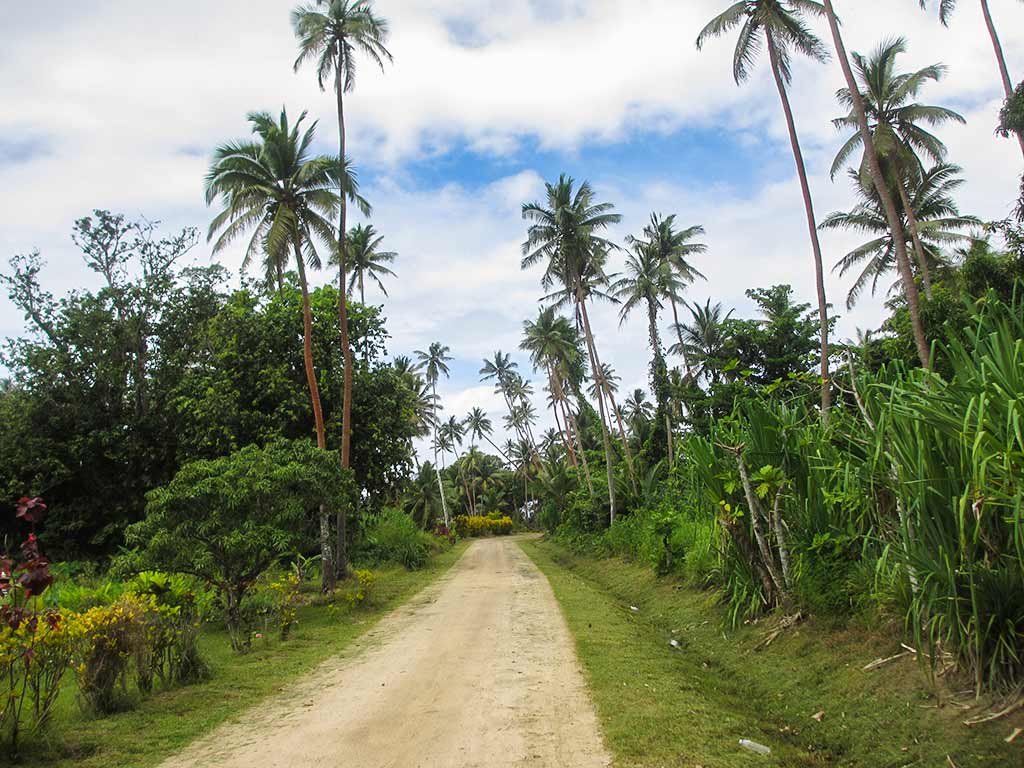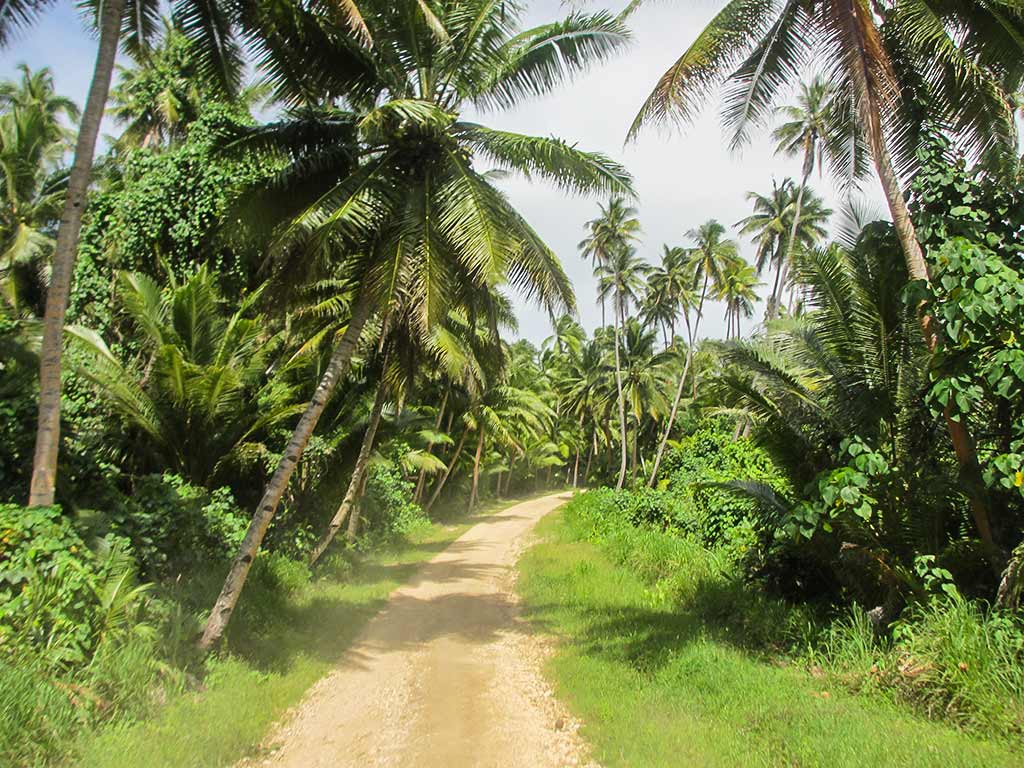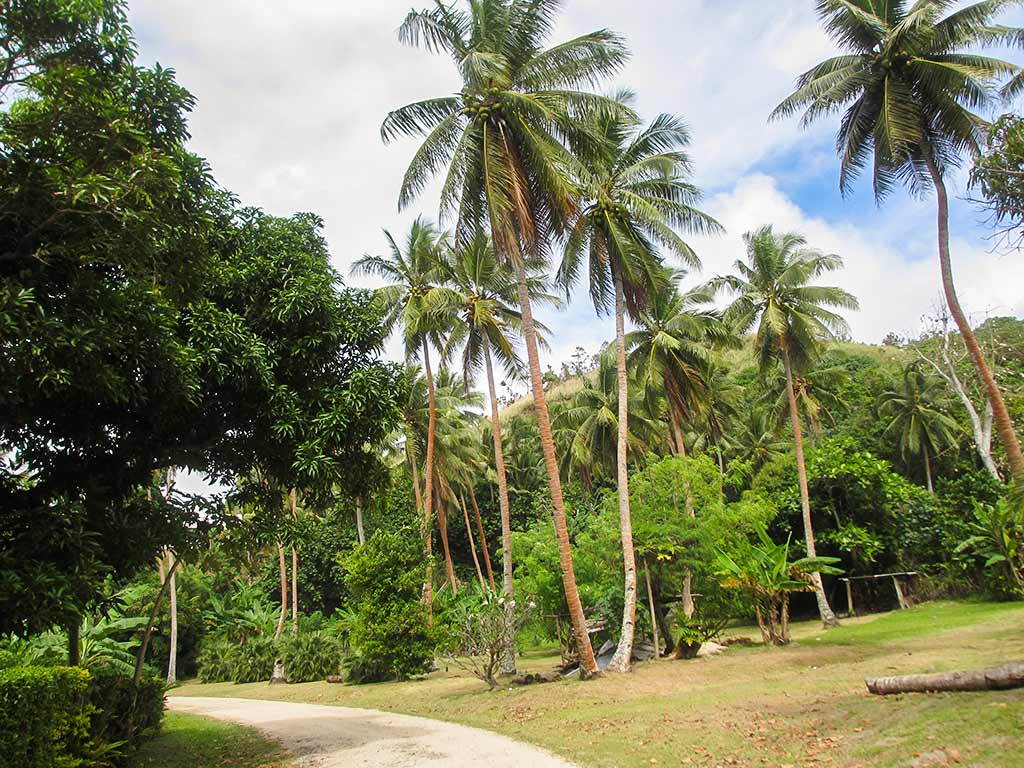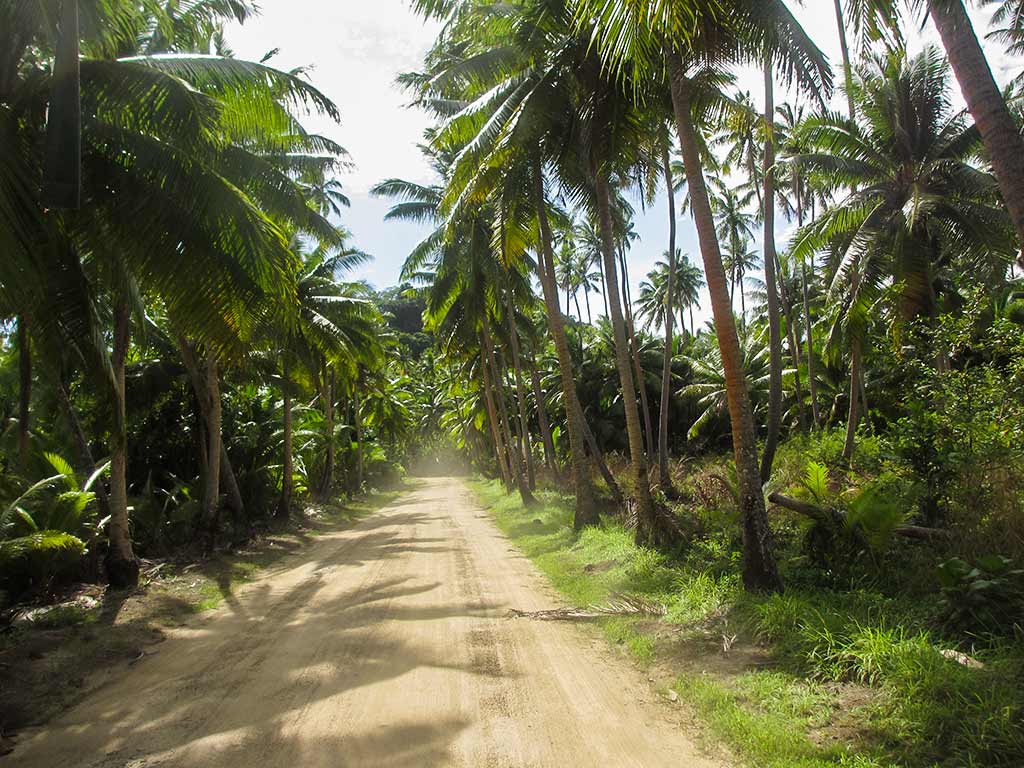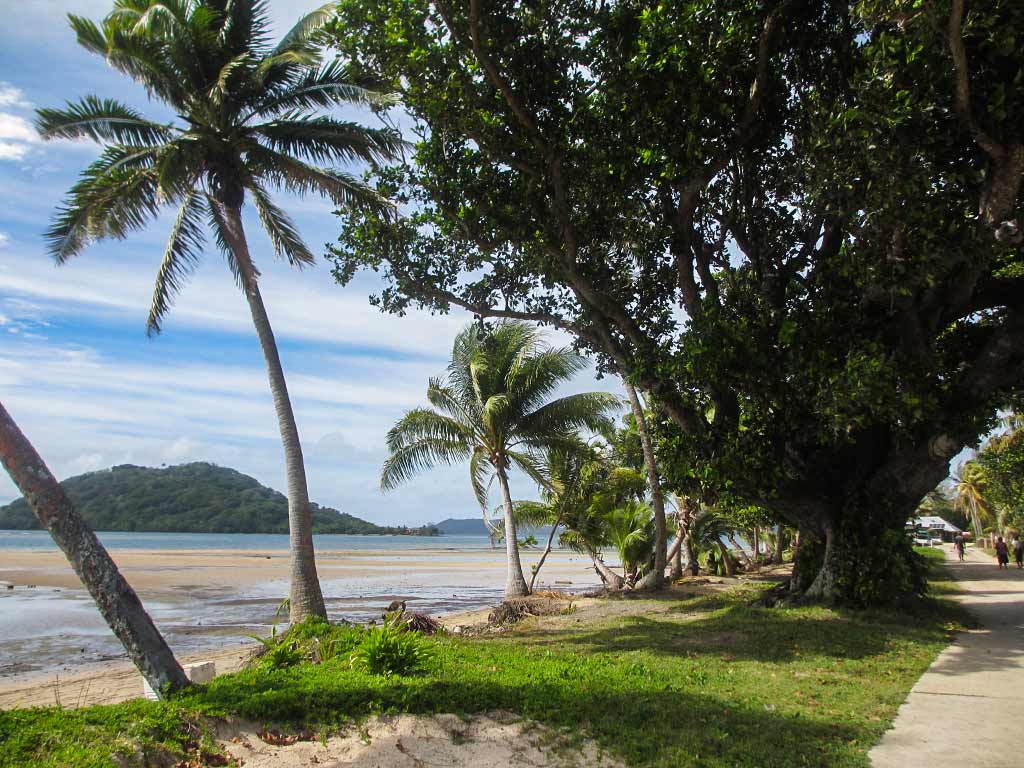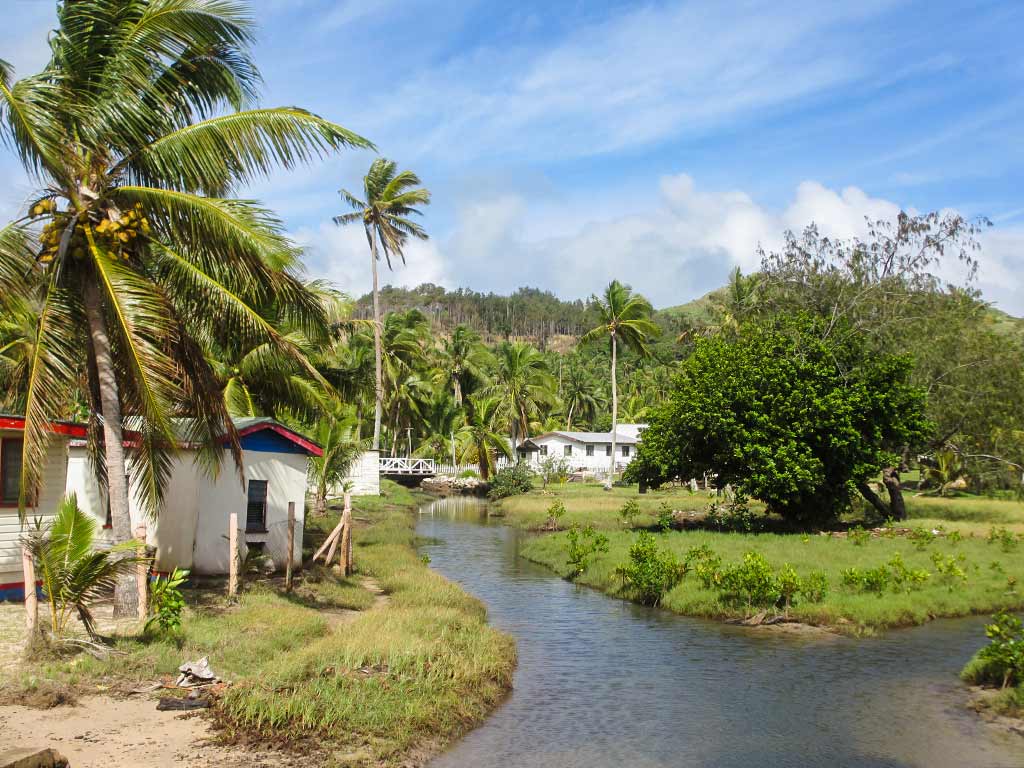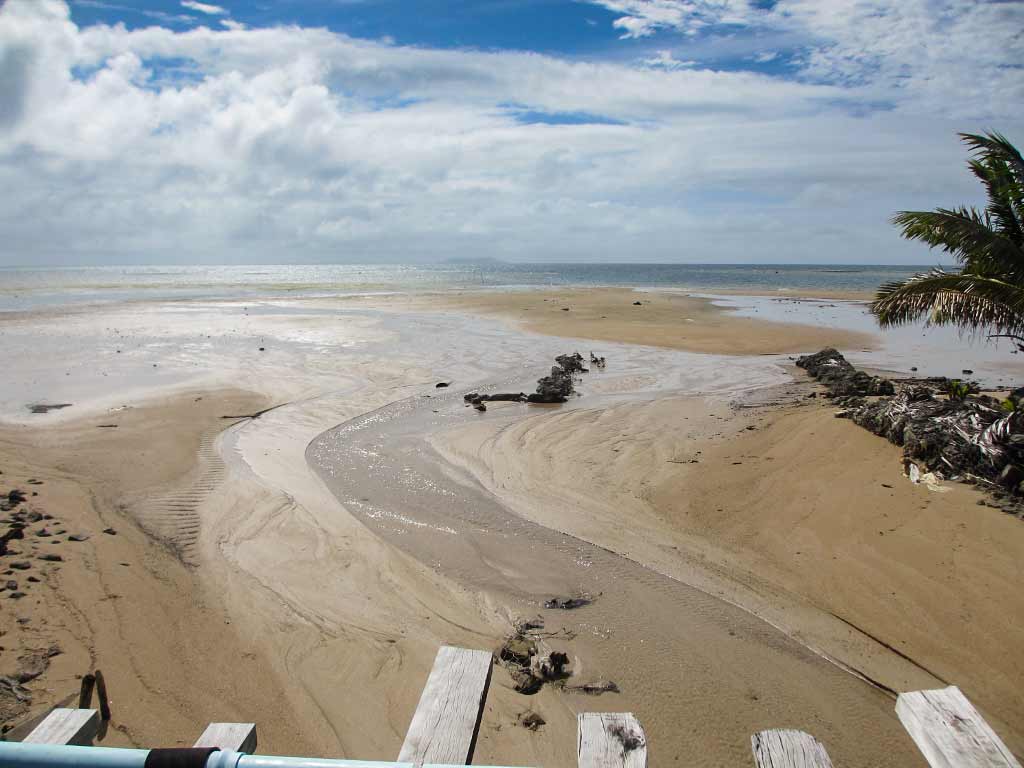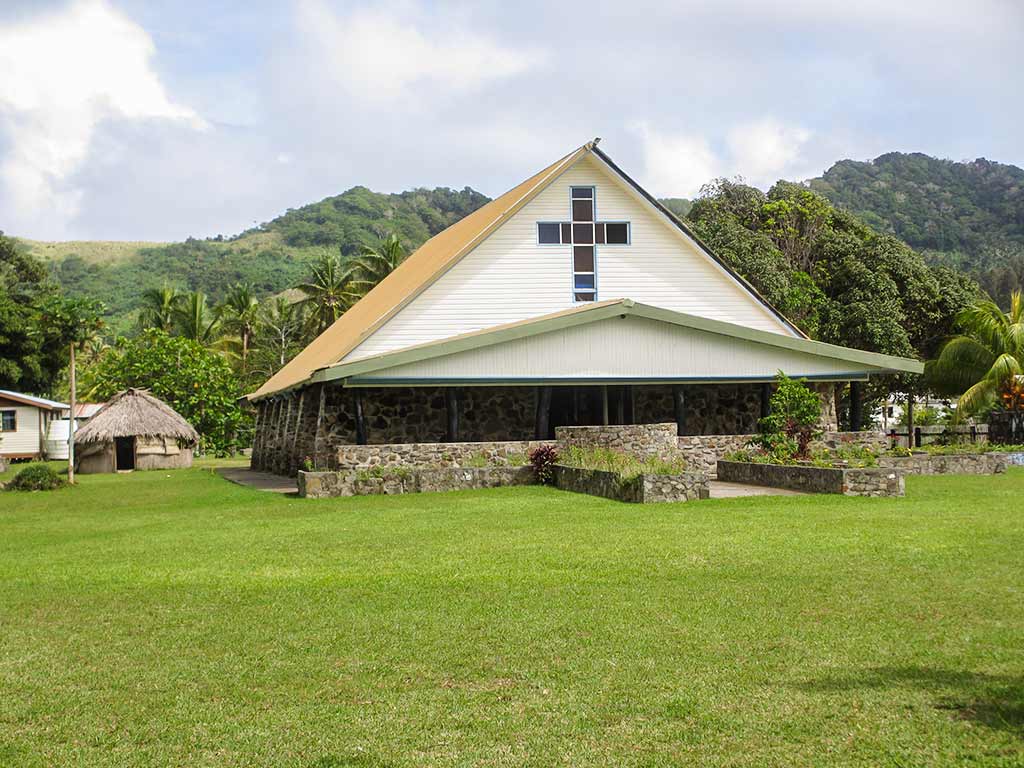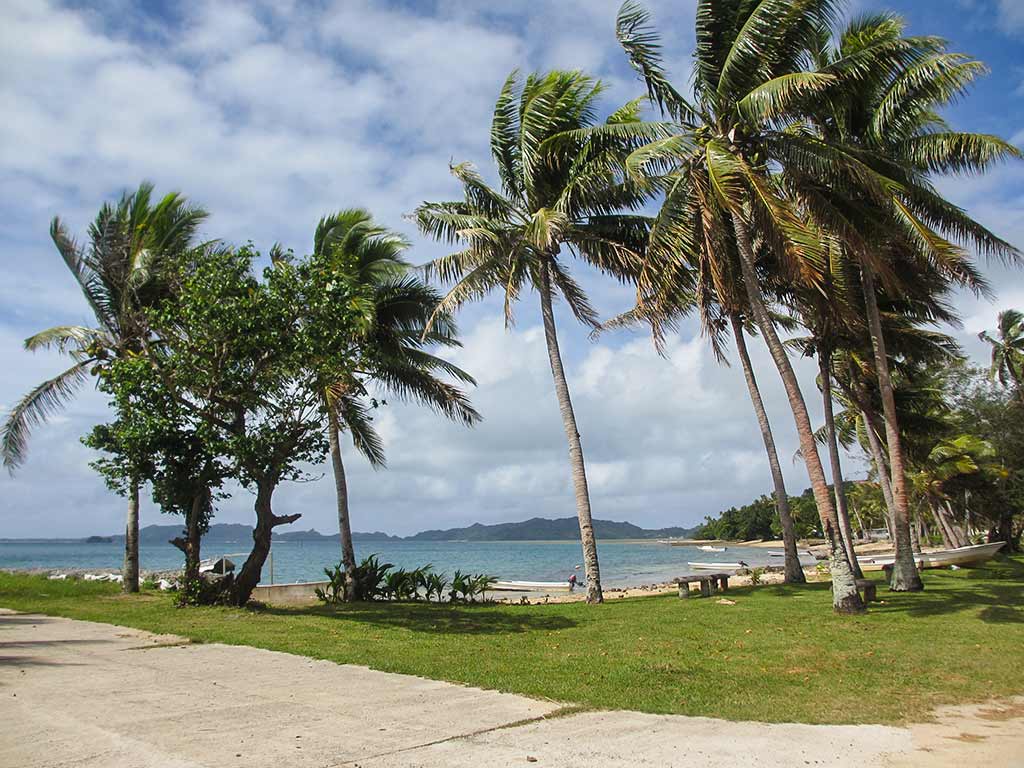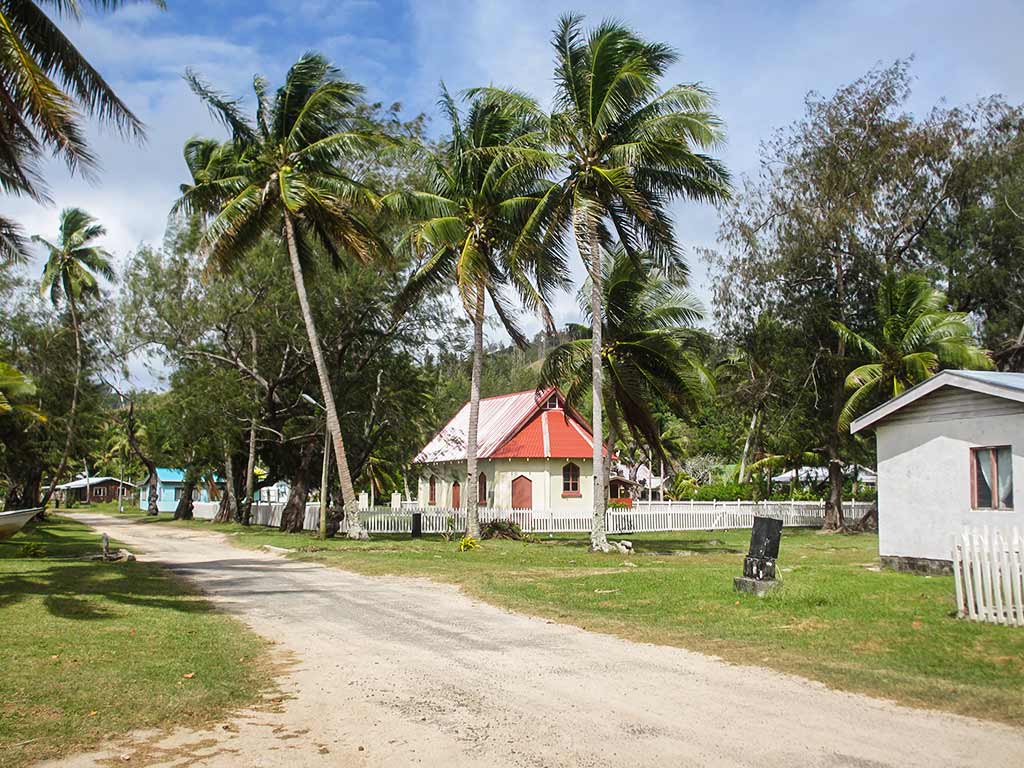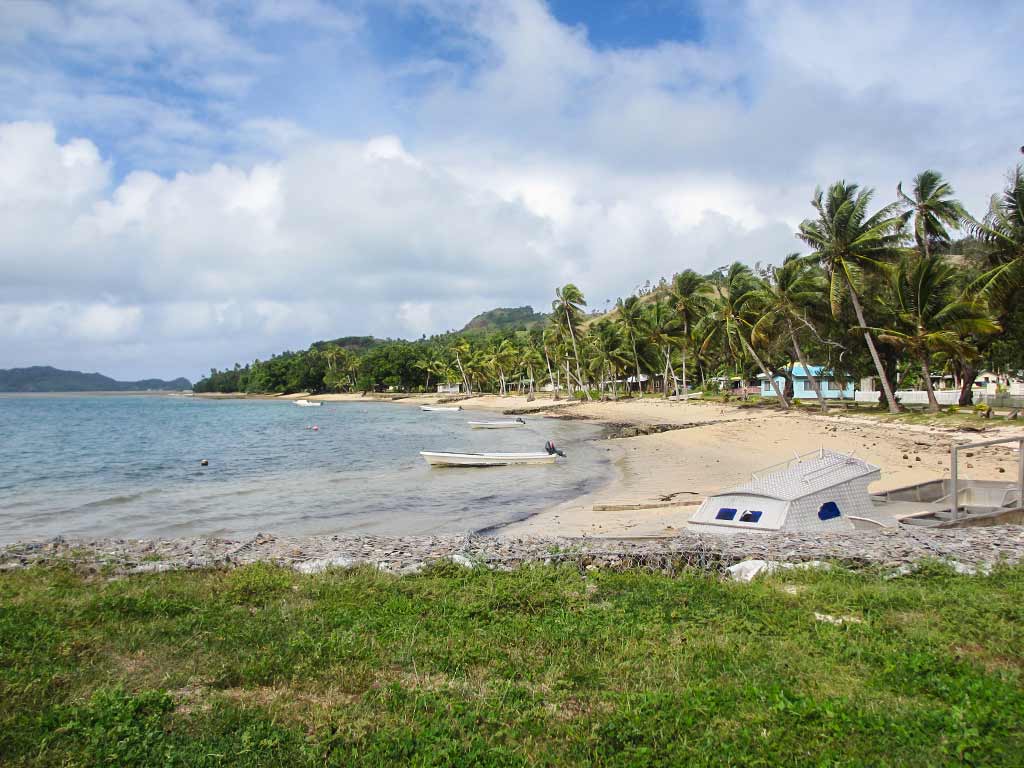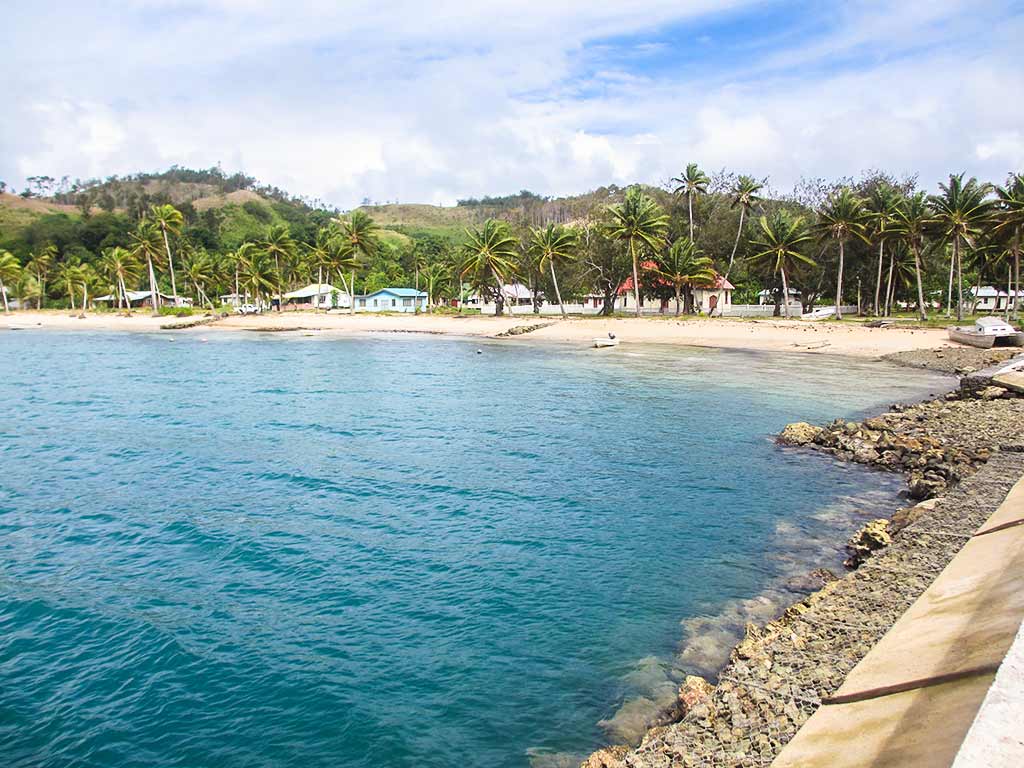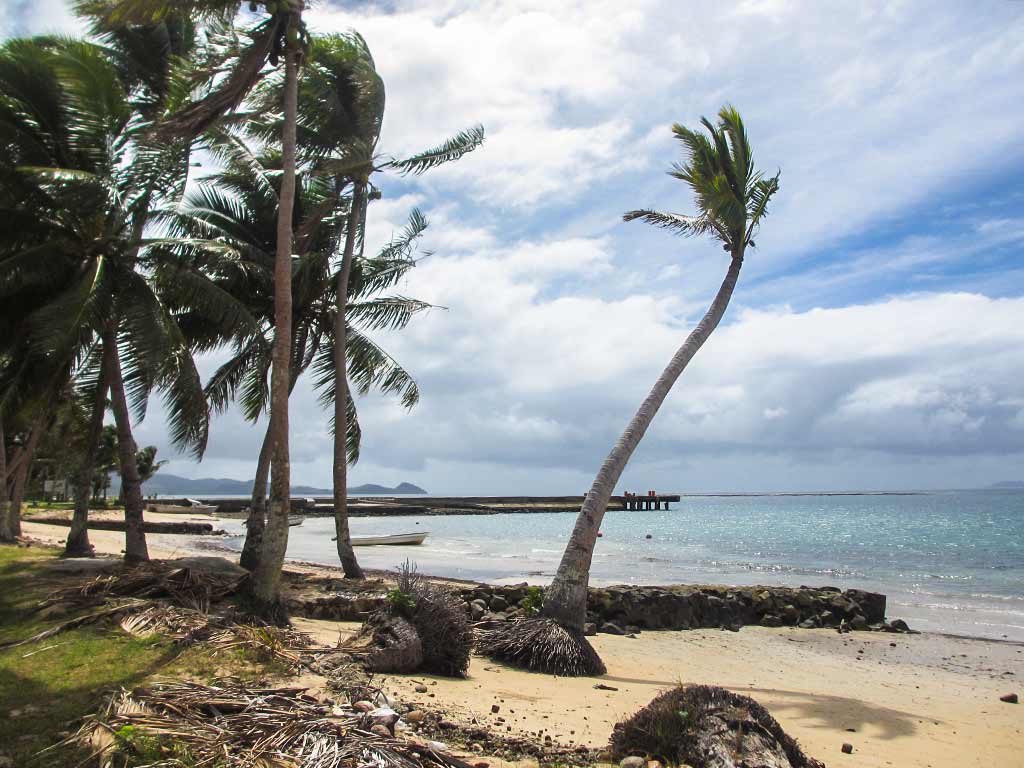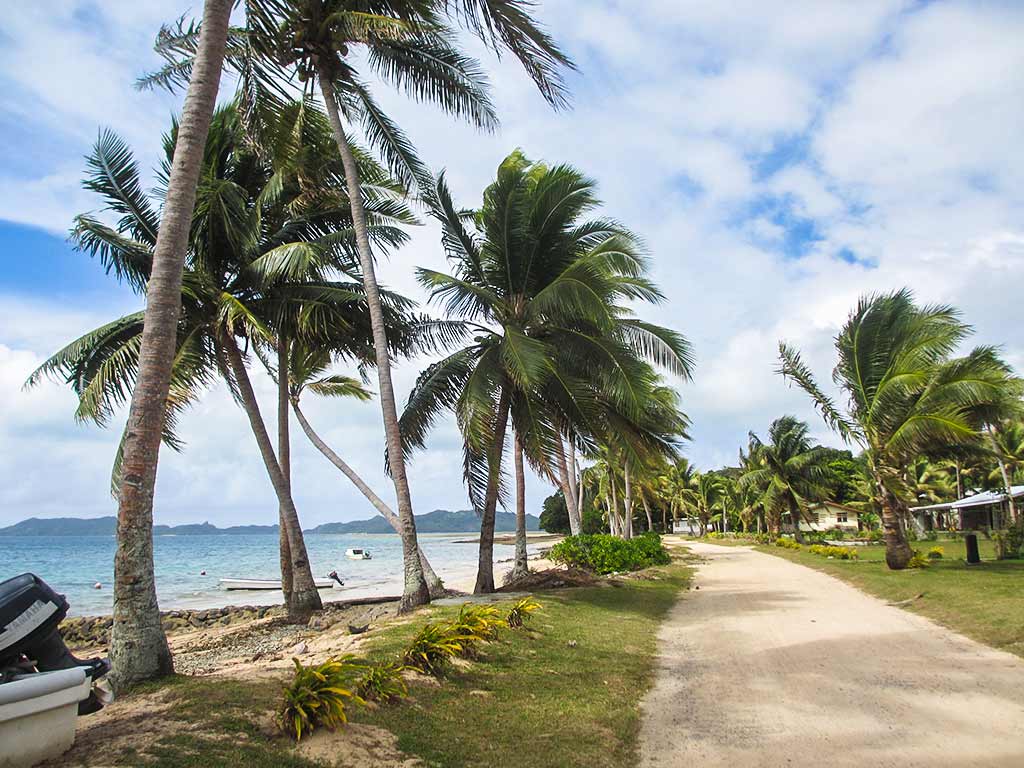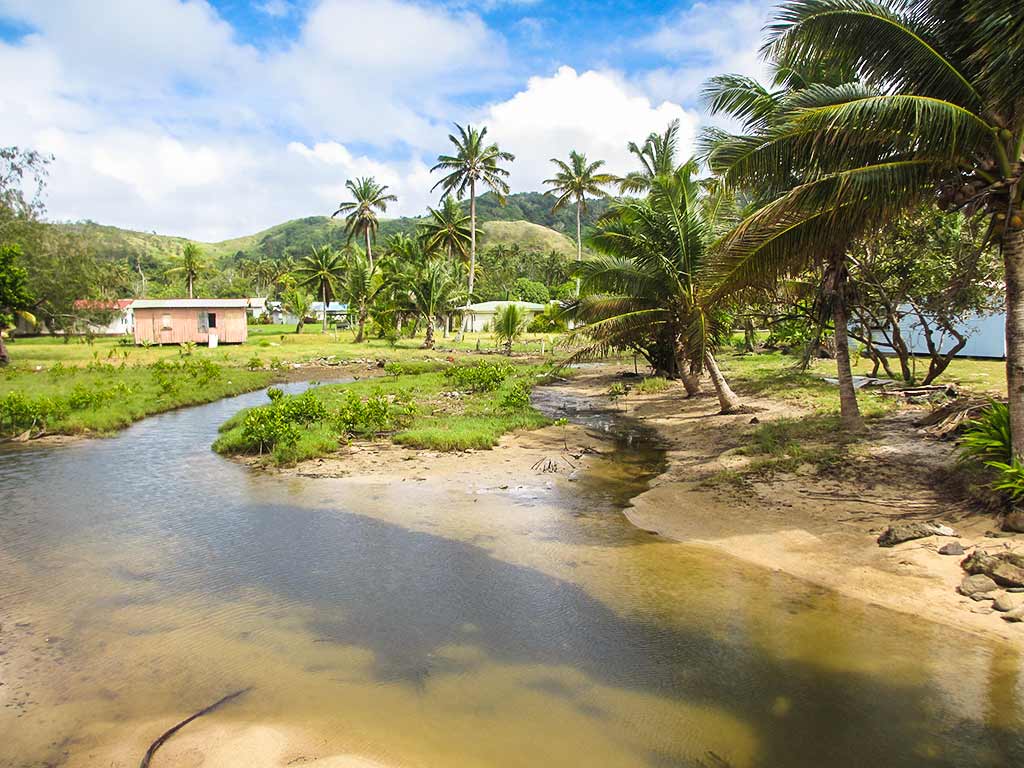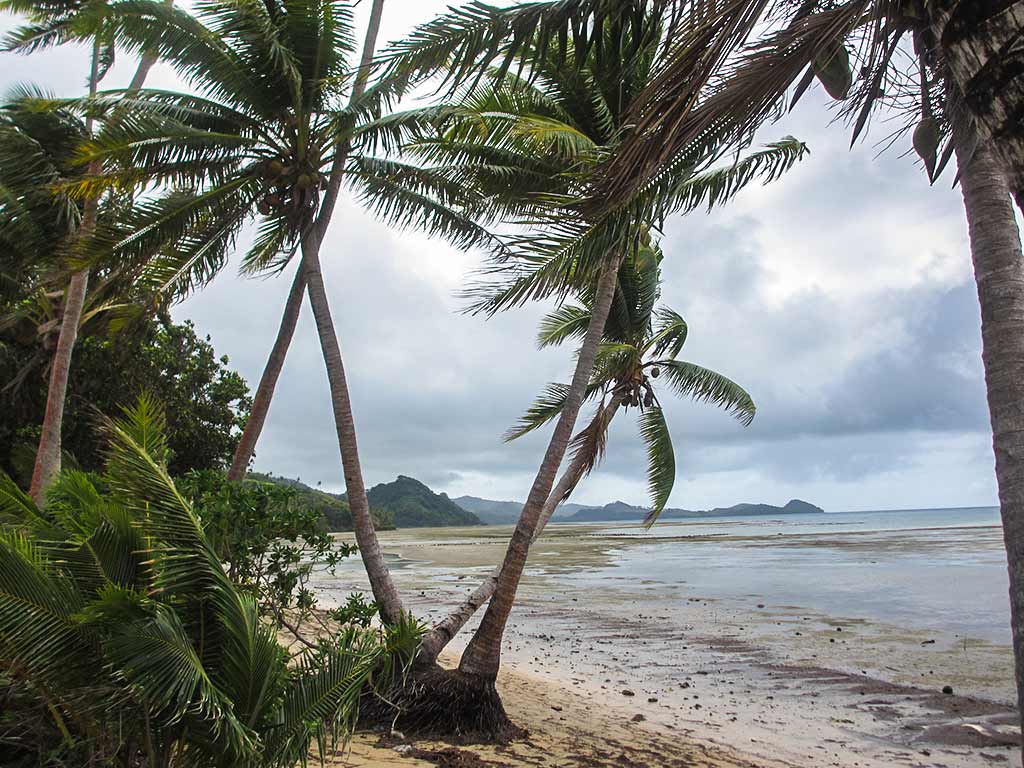September 18, 2013
It was going well as we walked by Malaka Bay’s village to the bus stop, the people we saw calling out a friendly, “Bula!” and stopping to chat. We were almost through the village when a guy came up to us saying we needed to see “the king.” We said we did our sevusevu ceremony at Dalconi Village, but he wasn’t having it and said we needed to do it here. We told him we were catching the bus but assured him we’d do it when we got back. (I was afraid this would happen.)
We made a plan for when we got back later in the afternoon: keep our heads down and walk quickly to our dinghy, hoping we could avoid this guy. But if we ran into him again, we’d go get some kava from our stash and do the darn sevusevu. We also agreed (assuming we were successful in getting to the dinghy unaccosted) that instead of spending the night here, we’d make a quick exit out of the bay when we got back. We didn’t want to worry later about getting a knock on our boat asking us when we were coming in to see “the king.”
The bus to Lomaloma turned out to be a large truck, completely open in the back with bench seating along both walls. We sat with about 20 other people, and I regretted not wearing a sulu for this. I didn’t figure I needed one for town; it never occurred to me to worry about the bus.
Soon, we were headed off to Lomaloma, the main town on this island. The dirt road was well maintained so it wasn’t very lumpy. It was actually a pretty ride though miles and miles of palm trees. As so often happens in foreign places, whether big cities or small rural areas, a kind person noticed us and made sure to advise us on when to get off the bus. In spite of my grumbling about the sevusevu thing, I want to emphasize that the people here are very, very nice. Below, a few photos of our ride across the island (click to enlarge/scroll through photo galleries below).
Lomaloma turned out to be an interesting town, sprawling along the seaside with small structures amidst well-manicured grounds. The trees were abundant, some large with gnarled trunks, some delicate wispy pines, and many, many palm trees. The town itself is flat but framed by green hills in the distance. Because of its location on the east side of the island, there’s a constant breeze that blows in from the ocean. In spite of being tropical, the town felt somewhat dusty and windswept, reminding me more of a town on an atoll than on a mountainous island. Below, a photo gallery of Lomaloma.
The first thing we did was find the market, where I was very relieved to find the eggs and onions I desperately needed plus a bag of potatoes and some cookies. This would help stretch our food supply another two weeks or so, after which we’d head back to Savusavu to restock. We also stopped at the town’s bakery and got some bread and snacked on cheese rolls, after which we took a walk through town and out on the wharf. This may not be the most beautiful place we’ve seen, but it had a nice ambience, very quiet and relaxed, and also very friendly. A man actually called out to us from his house asking if we’d like some tea, something I suspect happens all the time here. (We couldn’t take him up on his offer as we needed to catch our bus.)
We managed to find the correct “bus” (truck) back to Malaka, heading off just as a squall hit the area. It was very cool to sit and watch out the back of the truck as the wind picked up and the rain started pouring down behind us.
Once we got dropped off in our area, we made a beeline through the village to our dinghy, thankfully without seeing the guy who wanted us to do a sevusevu ceremony. Once back at the boat, we pulled our anchor and began our journey to the Bay of Islands, about five miles or so to the north. –Cyndi

